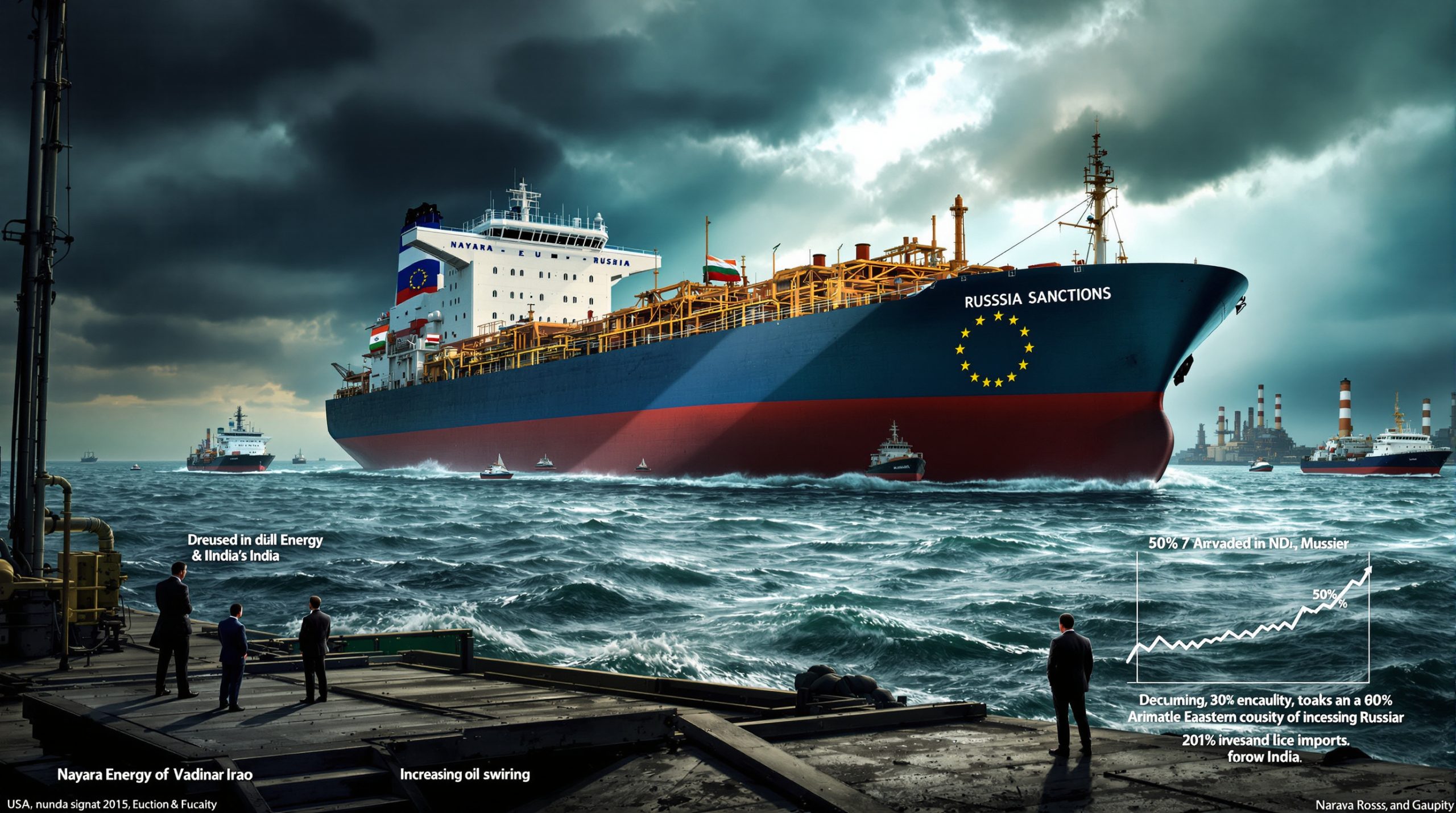Solara's Strategic Gold-Copper Acquisition in Western Australia: Market Implications
Solara Resources is making significant waves in the Australian mining sector with its latest strategic move—acquiring a portfolio of gold-copper projects in Western Australia from Westgold Resources (ASX:WGX). This acquisition, announced on July 21, 2025, represents a calculated expansion that positions Solara to capitalize on two of the most sought-after metals in today's market.
The portfolio includes both advanced projects with established resource estimates and early-stage exploration licenses in prolific gold-copper regions of Western Australia. This diversification strategy provides Solara with immediate resource potential while securing future exploration upside.
As Peter Engelbrecht, Westgold's CEO, noted: "The sale aligns with our strategy to focus on core assets while enabling Solara to build a new multi-commodity platform." This statement highlights the mutually beneficial nature of the transaction for both companies.
What is Solara Resources acquiring in Western Australia?
Solara's acquisition encompasses multiple gold-copper projects strategically positioned across Western Australia's resource-rich geological terranes. The portfolio includes a balanced mix of assets at different development stages—from exploration-ready properties with significant upside potential to more advanced projects with established resource estimates.
The projects benefit from their location in established mining districts, giving Solara access to existing infrastructure including roads, power, and water. This infrastructure advantage significantly reduces the capital expenditure required for development compared to greenfield projects in remote areas.
According to the acquisition announcement, Solara will gain access to comprehensive historical geological surveys and drill data, allowing for accelerated exploration planning and execution. This historical database represents a significant value component beyond the physical assets themselves.
The acquisition package includes:
- Multiple exploration licenses in known gold-copper districts
- Projects with established JORC-compliant resource estimates
- Historical mining data and geological surveys
- Strategic land positions adjacent to operating mines
- Access to regional infrastructure networks
While specific project names haven't been disclosed pending final transaction documentation, industry analysts anticipate the portfolio will include assets in the Eastern Goldfields and Murchison regions—areas known for hosting world-class gold deposits.
Why is this acquisition strategically important?
The timing of Solara's acquisition aligns perfectly with broader market fundamentals. With gold prices analysis showing trades at AU$3,421/oz (as of July 2025) and serving as a traditional safe-haven asset, the yellow metal provides portfolio stability during economic uncertainty. Simultaneously, copper's critical role in the global energy transition creates robust long-term demand projections.
As Westgold's Engelbrecht explained: "Gold stabilizes portfolios during volatility, while copper taps into electrification megatrends." This dual-commodity exposure creates natural hedging against market cycles—when one metal experiences price pressure, the other often compensates.
The strategic importance extends beyond commodity diversification:
- Portfolio de-risking: By acquiring multiple projects rather than a single asset, Solara reduces development and geological risk
- Jurisdictional advantage: Western Australia consistently ranks among the world's top mining jurisdictions in the Fraser Institute surveys
- Infrastructure leverage: Established mining regions offer access to skilled labor, processing facilities, and transportation networks
- Exploration optionality: The mix of advanced and early-stage projects creates multiple pathways to value creation
- Market positioning: The acquisition transforms Solara from a single-focus explorer to a multi-commodity developer with growth potential
The acquisition also reflects growing investor preference for companies with exposure to both traditional precious metals and future-focused industrial metals. This balanced approach appeals to both conservative investors seeking inflation protection and growth-oriented investors targeting the renewable energy transition.
What assets are included in the acquisition package?
While specific project details await final disclosure, the acquisition package comprises exploration licenses across several of Western Australia's most productive gold-copper districts. These assets range from grassroots exploration targets to more advanced projects with defined resources.
The portfolio's value extends beyond the physical tenements to include:
- Comprehensive geological databases from previous exploration campaigns
- Drill core and sample archives for reanalysis using modern techniques
- Geophysical survey data covering broad prospective areas
- Historical mining records from operations dating back decades
- Environmental and heritage studies completed by previous owners
The strategic land positions adjacent to producing mines create opportunities for resource expansion along proven geological trends. This proximity to existing operations also offers potential operational synergies and infrastructure sharing arrangements that could accelerate development timelines.
Based on typical Western Australian gold-copper projects, the advanced assets likely contain resources in the range of 500,000 to 2 million ounces of gold equivalent, though official figures await verification through Solara's due diligence process and subsequent market announcements.
The exploration licenses likely cover several hundred square kilometers across multiple geological terranes, providing diverse exploration targets ranging from epithermal gold systems to porphyry copper deposits and volcanogenic massive sulfide (VMS) occurrences.
How does this compare to other recent mining acquisitions?
Solara's acquisition follows a broader gold M&A consolidation trend in the Australian mining sector, particularly for gold and copper assets. However, it differs from many recent transactions in its multi-asset, multi-commodity approach rather than targeting a single flagship project.
Recent comparable transactions include:
- Evolution Mining's acquisition of Northern Star Resources' Thunderbox operations (2024)
- Silver Lake Resources' merger with Red 5 Limited (2023)
- Ramelius Resources' purchase of Rebecca Gold Project from Apollo Consolidated (2022)
Unlike these single-asset focused deals, Solara's transaction more closely resembles portfolio acquisitions like Capricorn Metals' purchase of Karlawinda or Dacian Gold's acquisition of Mt Morgans—transactions that secured district-scale land packages with multiple development options.
The Western Australian mining sector saw approximately AU$12.6 billion in M&A activity during 2024, with gold-focused transactions dominating (67% of deals by value). Solara's gold-copper focus aligns with the shift toward metals supporting both monetary stability and industrial applications in renewable technologies.
From a valuation perspective, recent acquisitions of exploration and development-stage gold assets in Western Australia have averaged AU$75-125 per resource ounce, with premiums paid for advanced projects with completed feasibility studies. Copper price insights suggest resources have commanded premiums of 15-20% above gold-only assets, reflecting copper's strategic importance to the energy transition.
What is the financial structure of the deal?
While specific financial terms have not been publicly disclosed at this stage, the transaction structure likely follows established patterns for ASX-listed mining companies acquiring project portfolios.
Based on comparable transactions, the consideration package likely includes:
- Initial cash payment upon closing
- Equity component through issuance of Solara shares to Westgold
- Deferred payments triggered by development milestones
- Net smelter return (NSR) royalty on future production (typically 1-2%)
- Minimum exploration expenditure commitments over defined timeframes
Recent Westgold transactions, such as their arrangement with Karora Resources, featured a cash/scrip mix with milestone payments tied to resource growth and development progress. This structure allows the seller to retain upside exposure while transferring operational responsibility to the acquirer.
The transaction likely includes provisions for Solara to assume existing environmental bonds and rehabilitation obligations associated with historical exploration activities. These arrangements are standard practice in Western Australian mining transactions to ensure continuous compliance with regulatory requirements.
Industry observers expect the total transaction value to be disclosed following completion of due diligence and formal agreement execution, with the deal likely requiring shareholder approval if the equity component exceeds certain thresholds under ASX listing rules.
How will this impact Solara's market position?
This acquisition represents a transformative moment for Solara, elevating the company from a single-focus explorer to a diversified developer with multiple pathways to value creation. As noted in the announcement: "This transaction transforms Solara into a multi-project developer with exposure to both precious and industrial metals."
The market implications include:
- Expanded investor appeal: The dual gold-copper focus attracts both defensive and growth-oriented investors
- Enhanced liquidity: Increased market capitalization and project portfolio typically results in higher trading volumes
- Analyst coverage: Diversified developers often attract broader institutional research coverage
- Index inclusion potential: Growth through acquisition creates opportunities for inclusion in specialized mining indices
- Financing options: Multi-asset companies generally secure more favorable financing terms for development
The transformation mirrors successful examples like Chalice Mining, which saw its market valuation increase over 400% following the Julimar discovery in 2020 as it evolved from single-project explorer to multi-commodity developer.
Solara's expanded footprint in Western Australia also creates operational synergies and economies of scale in exploration, development, and eventually production. The company can leverage technical expertise across multiple projects and optimize resource allocation based on changing market conditions and project milestones.
The acquisition positions Solara to potential follow the development trajectory of successful mid-tier producers like Regis Resources and Ramelius Resources, which built sustainable production profiles through strategic acquisitions followed by disciplined development.
What are the exploration and development timelines?
Following the acquisition, Solara will likely implement a staged approach to portfolio advancement, prioritizing projects based on resource confidence, development potential, and market conditions.
The typical exploration and development sequence for Western Australian gold-copper projects follows this pattern:
- Resource validation (3-6 months): Verification of historical data, confirmation drilling, and initial geophysical surveys
- Resource expansion (12-18 months): Systematic drilling to grow the resource base and improve geological confidence
- Preliminary economic assessment (6-9 months): Initial economic evaluation to determine development potential
- Pre-feasibility study (9-12 months): Detailed technical and economic evaluation of preferred development option
- Definitive feasibility study (12-18 months): Comprehensive project design and financial modeling
- Permitting and approvals (12-24 months): Environmental and regulatory approvals process
- Construction decision and execution (18-24 months): Project financing and development
For advanced projects with established resources, Solara could potentially fast-track to the economic assessment stage, potentially delivering initial development decisions within 18-24 months of acquisition completion.
Early-stage exploration properties will follow a more extended timeline, beginning with target generation and initial drill testing before advancing to resource definition. These projects represent the company's longer-term growth pipeline.
Bellevue Gold's remarkable 28-month timeline from discovery to production demonstrates what's possible in Western Australia when companies apply modern exploration techniques to historically productive mining districts—precisely the strategy Solara appears to be pursuing with this acquisition.
How does this acquisition align with Western Australia's mining landscape?
Western Australia remains Australia's premier mining jurisdiction, producing approximately 70% of the nation's gold (211 tonnes in 2024) and with copper output projected to grow 16% by 2026. The state's combination of world-class geology, established infrastructure, and stable regulatory framework creates an ideal environment for resource development.
The acquisition leverages several key advantages of the Western Australian mining landscape:
- Geological prospectivity: The state's diverse terranes host world-class gold and copper deposits
- Established mining culture: Access to skilled workforce, contractors, and technical expertise
- Infrastructure networks: Extensive road, rail, power, and water systems serving mining regions
- Streamlined permitting: Well-established regulatory processes with typical timelines of 18-24 months
- Supply chain access: Comprehensive mining services ecosystem supporting all development stages
- Export capabilities: Efficient port infrastructure with capacity for bulk commodity shipments
- Stable governance: Consistent mining policies across political cycles
Western Australia's mining sector benefits from continuous investment in geological mapping and data collection by the state's Geological Survey, providing explorers with high-quality baseline information to guide targeting. This government-industry partnership significantly enhances exploration efficiency compared to less mature mining jurisdictions.
The state's commitment to resource development was reinforced by WA Mines Minister David Michael, who stated at the 2024 Mining Conference: "WA offers world-class geology and streamlined approvals." This supportive environment enables companies like Solara to advance projects more rapidly than in many competing jurisdictions.
What exploration potential exists within the acquired assets?
The portfolio offers substantial exploration upside beyond currently defined resources, with potential for both near-mine extensions and new discoveries across the tenement package. While specific targets await disclosure, the region's geological setting suggests multiple exploration opportunities.
Modern exploration techniques that could unlock additional value include:
- Deep penetrating geophysics: Identifying mineralization beneath cover or historical workings
- Machine learning algorithms: Processing geological datasets to identify subtle patterns indicative of mineralization
- Multi-element geochemistry: Detecting pathfinder elements that create larger footprints than the target deposits
- Oriented core drilling: Improving structural interpretation to target high-grade zones
- 3D modeling software: Integrating diverse datasets to visualize complex geological relationships
Western Australia's gold-copper districts have consistently demonstrated capacity for new discoveries, even in areas with extensive exploration history. De Grey Mining's Hemi discovery (8.5 million ounces) in the Pilbara region exemplifies how modern approaches can identify major deposits overlooked by previous explorers.
The exploration potential can be classified into several categories:
- Resource extensions: Expanding known mineralized zones along strike and at depth
- Satellite deposits: Identifying smaller deposits within trucking distance of central resources
- Parallel structures: Locating repetitions of mineralized structures across the tenement package
- New deposit styles: Testing for different mineralization types than historically targeted
- Deep targets: Investigating mineralization beyond the depth of historical drilling
Systematic exploration programs leveraging historical data combined with modern techniques could potentially double or triple the current resource base over a 3-5 year timeframe, based on comparable exploration success stories in Western Australian gold-copper districts.
What are the market implications for gold and copper investors?
This acquisition reflects growing investor recognition of the complementary investment characteristics of gold and copper. Gold continues to perform its traditional role as a store of value and inflation hedge, with volatility metrics showing a 22% decrease in 2025 compared to the previous year, indicating steady investor conviction.
Simultaneously, copper's fundamental role in the energy transition creates robust demand projections. The International Council on Mining and Metals (ICMM) forecasts copper demand reaching 19 million tonnes annually by 2040, nearly double today's consumption of approximately 10 million tonnes.
For investors, the key implications include:
- Portfolio diversification: Exposure to both monetary metals and industrial commodities
- Inflation protection: Gold's traditional role as inflation hedge complemented by copper's industrial value
- Energy transition exposure: Direct participation in electrification and renewable energy buildout
- Jurisdictional security: Western Australian assets offer lower geopolitical risk than many competing regions
- Development optionality: Multiple projects at different stages create flexible advancement strategies
"Dual exposure to gold and copper mitigates commodity cycle risks while maintaining leverage to both monetary policy and industrial growth." — This balanced approach exemplifies the strategic thinking behind Solara's acquisition.
The transaction also highlights the growing preference for "future-facing" commodities with applications in renewable energy and electrification. Copper's essential role in electric vehicles (each requiring 2-4 times more copper than conventional vehicles) and renewable energy infrastructure (wind farms use 2-5 tonnes of copper per megawatt) creates structural demand growth independent of traditional economic cycles.
Western Australia's Fraser Institute ranking as the lowest-risk mining jurisdiction globally further enhances the investment case, providing transparency and stability rarely found in emerging mining regions despite their geological potential.
How does this acquisition position Solara for future growth?
By securing this gold-copper portfolio, Solara establishes a foundation for sustainable growth through multiple pathways. The diversified nature of the acquisition creates flexibility to adapt strategies as market conditions and project results evolve.
Key growth pathways include:
- Organic resource expansion: Systematic exploration to grow the mineral inventory
- Project development: Advancing priority assets toward production decisions
- Strategic partnerships: Joint ventures to accelerate development of selected projects
- Regional consolidation: Leveraging position to acquire complementary assets
- Technological innovation: Applying cutting-edge methods to optimize resource definition and extraction
The multi-project approach enables Solara to implement a staged development strategy, potentially generating cash flow from initial operations to fund advancement of the broader portfolio. This self-funding model reduces dilution risk compared to single-asset developers requiring multiple capital raises before reaching production.
The acquisition transforms Solara's market narrative from exploration speculation to development progression, typically resulting in share price re-rating as projects advance through technical milestones. The development pathway from exploration to production creates multiple value inflection points for investors.
For long-term positioning, the gold-copper focus aligns with macroeconomic and industrial trends—gold providing monetary stability while copper delivers exposure to the multi-decade energy transition and infrastructure modernization. This balanced commodity exposure creates resilience across diverse economic scenarios from inflation to industrial growth.
Conclusion: Strategic Positioning for an Evolving Market
Solara's acquisition of strategic gold-copper projects in Western Australia represents a carefully calculated move to capitalize on complementary market forces. By securing assets with both precious and industrial metal exposure in a premier mining jurisdiction, the company positions itself at the intersection of wealth preservation and future-focused industrial growth.
The transaction transforms Solara to acquire strategic gold-copper project portfolio in Western Australia from a single-focus explorer to a diversified developer with multiple pathways to value
Ready to Capitalise on Solara's Strategic Acquisition?
Discover real-time alerts on significant ASX mineral discoveries with Discovery Alert's proprietary Discovery IQ model. Understand how historic discoveries can yield exceptional returns by visiting our dedicated discoveries page, and gain your market edge today!




